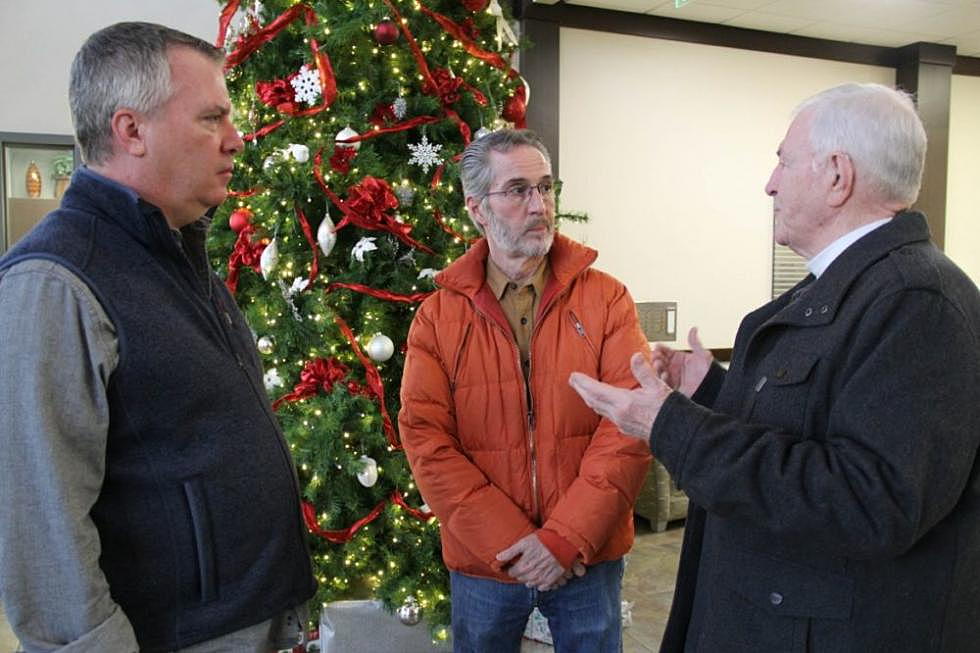
Yellowstone County pushes smokers 20 feet from public buildings; no e-cigs indoors
A new rule prohibiting smoking within 20 feet of public entryways, windows or ventilation systems will take effect in Yellowstone County on March 1.
The rule, adopted Thursday morning by the RiverStone Board of Health, also prohibits the indoor use of e-cigarettes and other vaping devices in public spaces, basically bringing them under the same rules as traditional forms of smoking.
John Felton, president and CEO of RiverStone Health, the Yellowstone County public health agency, said that other jurisdictions in Montana have made rules regarding e-cigarettes, but that Yellowstone County is the first to require people smoking outside to be a specific distance from doors and other openings.
The new Rule 7, as it is known, is an extension of the Montana Clean Indoor Air Act, which banned indoor smoking in public places statewide.
During a public hearing preceding the vote Thursday morning, the only person to testify against the rule change was Mark Parker, a Billings lawyer representing the Yellowstone County Tavern Association. He spoke only briefly, telling the board that the rule would be virtually unenforceable.
A dozen or more tavern owners attended the hearing Thursday, but none of them spoke, apparently because many of them had already aired their opinions at RiverStone Board of Health hearings in June and July.
After the meeting, though, they congregated in the hallway and lobby outside the hearing room in RiverStone’s Lil Anderson Center and vented about what they consider an unfair law. They said it penalizes business owners who’ve already shown they can comply with clean indoor air regulations, and many of whom have built “smoke shacks” outside their bars.
The new rule, as originally drafted, would have required a setback of 30 feet, but after the board adopted the rule Thursday, board member Diane Duin moved to reduce the separation to 20 feet, and the motion passed.
Another board member, John Hedge, said the rule seemed to be unfair because it penalized some tavern owners, particularly those downtown, who might not be able to accommodate smokers at all.
“You’d have to put the shack in the middle of the street,” he said.
Larry Davidson, who owns the Crystal lounge at the corner of North Broadway and First Avenue North, said the new rule “is almost taking me to a no-smoking situation.”
The new rule also establishes penalties for individuals who violate the rule and requires property owners or managers to inform violators of the rule, or to “file a complaint against the person(s) in violation of the Rule.”
“I’m confused as to who’s going to enforce it and how it’s going to be enforced,” Davidson said. “Are we meant to apprehend and hold and wait for the police?”
Davidson said he doesn’t understand how he can enforce a law on public property, in his case a sidewalk, and he wonders what he’s supposed to do if a transient, for instance, happens to be smoking on the sidewalk outside his bar.
Jim Grubbs, the owner of Club 90 on Grand Avenue, said his smoke shack is on the north side of his tavern, and smokers there will have nowhere to go but into his unpaved parking lot.
“They’d be out in the mud and the snow,” he said.
Parker, the tavern association lawyer, told some of the bar owners in the hallway that they might have to wait until the law takes effect, and then when enforcement begins to challenge the rule in court.
Felton, the RiverStone Health CEO, said many other places in the United States have adopted similar setbacks, and “I haven’t heard of any sort of significant enforcement risk.”
By law, complaints would go first to RiverStone Health, which has two tobacco enforcement specialists, and the Yellowstone County Attorney’s Office would be asked to intercede and file charges only if there were multiple complaints over time, Felton said.
If a complaint were filed against at individual violator, Felton said, the tobacco enforcement specialists could try to talk to that person, but if he or she was already gone, they could talk to the property owner about the situation.
Even then, he said, the approach would be to look for signs explaining the rule — which will be provided by RiverStone — see where ashtrays and butt receptacles are placed and make sure the owner understands the law.
“It’s a very educational process,” he said.
Felton told the board earlier that public health officials always aim to bring about big changes in people’s habits by pursuing incremental adjustments, “by changing the context of normal.”
After the meeting, he elaborated somewhat, saying people involved in public health always ask themselves, “What can you do to make the healthy choice the easy choice?”
Details: To read a set of frequently asked questions about Rule 7, go here.
